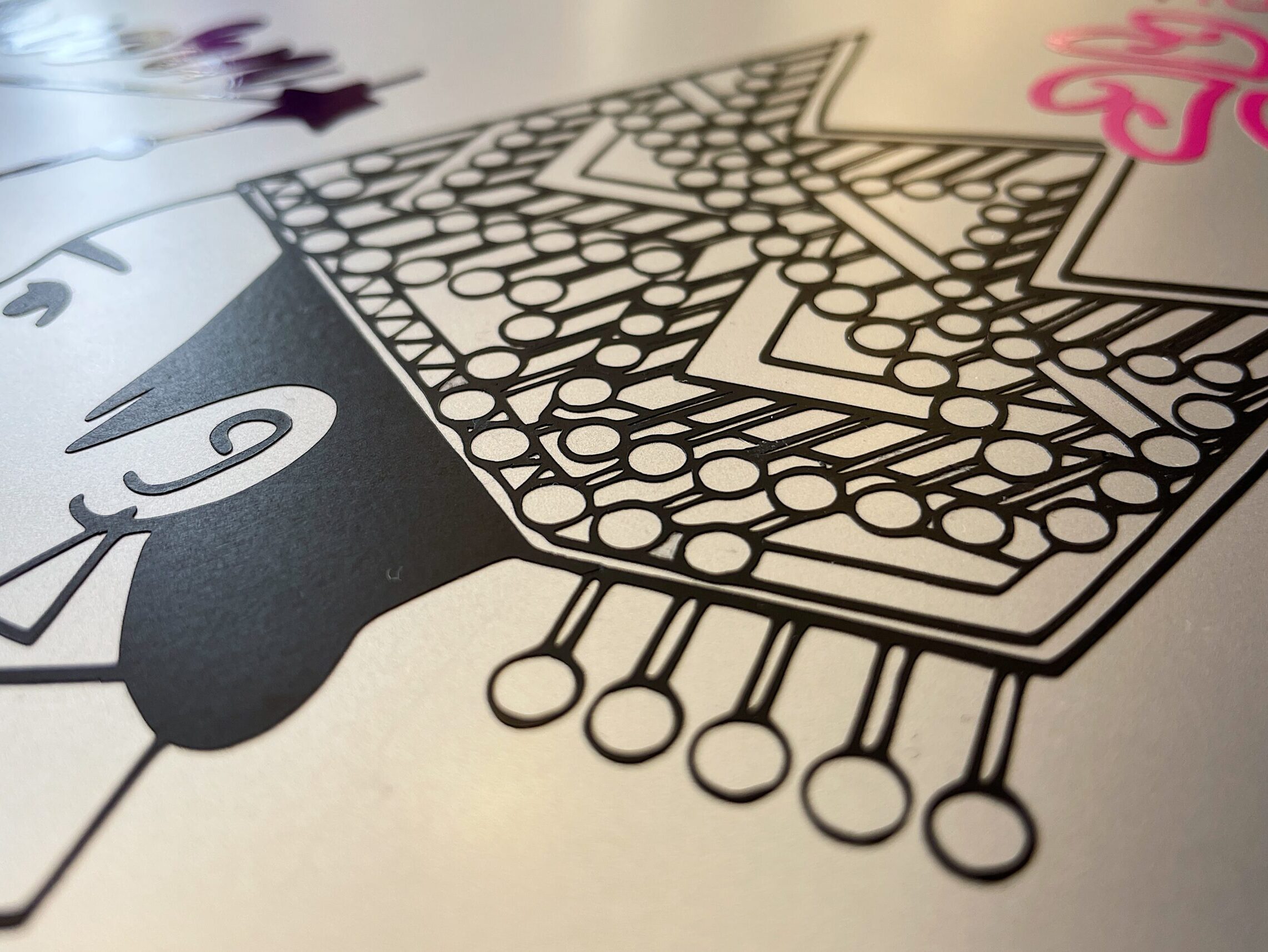When junior Gaofeng Xiong assists someone in the CreateSpace, they likely don’t know about her Hmong heritage or that her nickname is “Goldfish.”
When someone walks by St. Thomas senior Sean Kurtenbach studying in the library, they probably don’t know that he plays club soccer for the university and is an avid soccer fan at the local and international levels.
The laptops sitting next to them, however, tell these students’ stories to passersby if they take the time to look.
“Stickers are a little window to who you are without going too deep,” Xiong said.
Xiong and Kurtenbach said their stickers have sparked conversations and forged connections with strangers.
“Someone came up to me, and she was like, ‘Oh, I really like this one in particular,’ the one with the Hmong girl with the hat,” Xiong said. “She was like, ‘Can you tell me a little bit more?’”
Xiong explained, “I don’t wear my cultural clothing to school. I wear more Westernized and modernized clothing. To express that I am Hmong, and to express a little bit of my culture, that’s why I have that on my laptop. It has meaningful ties to me.”
Kurtenbach has had similar exchanges about soccer and spikeball.
First-year Maddie Claas, who has stickers of several popular TV shows, said the visual nature of stickers reveals information more quickly than a conversation.
“It’s easy,” Claas said. “People just see it, and they know something about you immediately.”
A 2021 study from the University of Florida psychology department found that college student test subjects were able to perceive things about their peers’ personalities after viewing a picture of their laptop stickers. The study measured five dimensions of personality: extroversion, agreeableness, conscientiousness, negative emotionality and open-mindedness.
“That perceivers show acceptable consensus for most Big Five traits and significant accuracy for at least two traits based solely on viewing people’s laptop stickers is remarkable, but also understandable because laptop stickers likely serve as socially directed advertisements of their owners’ preferences and identities,” the study read.
Xiong said students can make their own stickers with the vinyl cutters in the CreateSpace, which is located on the main floor of the Anderson Student Center. Xiong made several of her laptop stickers there, including the Hmong girl and Goldfish.
“We have black vinyl material, we have glitter and we have so many more, from metallics to matte and all of the colors of the rainbow,” Xiong said.
Mia Laube can be reached at mia.laube@stthomas.edu.



